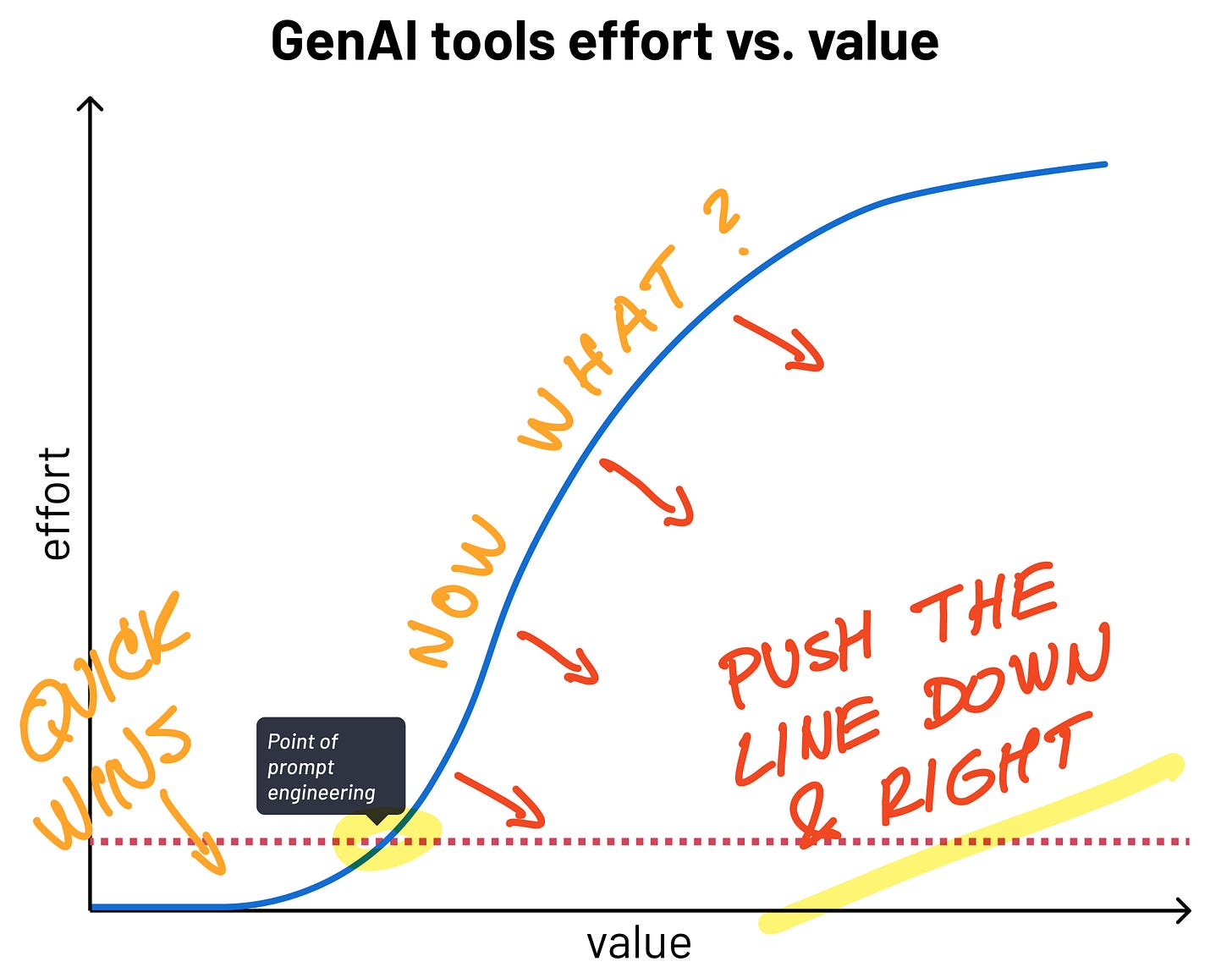Role of UX Designers in the Age of AI
Putting the user back in the center: the importance of UX design in the age of Generative AI.
Generative AI applications are popping up everywhere. Every other company is thinking hard about how to use AI in their products. Some of them go for it, slap the AI chat interface on their current app, and hope for the best. Done; we can now put the AI-powered slogan on our website and steam ahead toward a bright future.
It's understandable from the business executive's point of view. Whoever stays behind these days will be left behind. The train of progress is not waiting for anyone. And since generative AI products already proved to increase productivity, it's hard not to jump on this hype train. Also, it is very tempting for engineers to add the most cutting-edge technology to their tech stack.
But hey, here we are, at the beginning of the year 2024, and this is the current state of the UX of AI. It barely exists.
However, I have never heard that apps pushed forward by the executives and engineers would be an excellent experience for the end users. But hey, here we are, at the beginning of the year 2024, and this is the current state of the UX of AI. It barely exists. End users, the actual people who should be using all those mighty generative AI applications, were left somewhere in the dust.
This situation results in technology-centric design—a complete turnaround from the user-centric design of the recent past. Users are not in the center anymore, far from it. It's the most obvious thing in the design world, but it's still worth reiterating - apps are built for the users. And if users cannot utilize the full power of the app, the app is probably not so well designed.
Let’s look at the mainstream generative AI tools. Their user experience design, or rather lack of it, is the most striking with Midjourney. The currently most capable image-generating tool is limited only to users willing to learn complicated text-based commands and post them to the chat of the dedicated Discord server. The history surely rhymes because this is MS-DOS and other command line tools all over again.
I’m not saying the command line interfaces are wrong - on the contrary. I think they’re brilliant and very efficient tools. But only in the hands of skilled users who know all the commands by heart and use the tools for their specific use cases. The learning curve of such interfaces is too steep for everyday users and their everyday tasks. And that loops us back to one of the fundamental promises of the whole AI story - to make the complicated technology accessible to regular users.
Let's say the effort vs. value curve of generative AI tools looks something like the shallow letter S. At the beginning, almost without any effort, generative AI tools provide quite some value to their users. It includes stuff like generating funny stuff, birthday present tips for grandparents, progressively crazy images, or random ideas to include in the next quarterly presentation. Simple and straightforward - a quick wins territory.
But most of the power of the generative AI tools is hidden behind the steep learning curve, undocumented features, or cryptic prompt parameters. The curve of required effort starts to rise quickly, and it is escaping the quick wins territory. Very soon, it crosses the critical point. Let's call it a point of prompt engineering. After that, the user enters the fluid now what? territory of Midjourney --parameters and ChatGPT prompts as long as short stories. Without consulting prompt hackers, searching the web, or spending significant time learning prompt writing, the value gained from the tool does not rise any further.
The role of UX designers in the age of AI is to push the curve to the right to allow more users to gain more value from the tool before hitting the point of prompt engineering. And to push it down to ease the steepness of the learning curve and allow less demanding entry for new users.
The role of UX designers in the age of AI is to push the curve right and down. Push it to the right to allow more users to gain more value from the tool before hitting the point of prompt engineering. Push it down to ease the steepness of the learning curve and allow less demanding entry for new users. In my opinion, this is the primary role of UX designers in today's era of UX of AI. It is the push against the technology-centered design and back toward the design focused on the actual end users and their needs.
But from the current state of UX of AI, it is evident that users are not the only victims of this technological AI race. I argue that UX designers were also left behind. Or we stayed behind. One way or the other, we need to get up to speed. Embrace the new AI UI paradigm - it's not going away anytime soon. Push for the user-centered design again. Start advocating more for the end users. Research and user-test every new feature. Push for better usability that would benefit users even if it means more effort on the development side. Talk to the engineers and business executives and persuade them that, at the end of the day, proper UX design is worth the effort and will benefit everyone. Let’s make 2024 the year the users were put back in the center.



